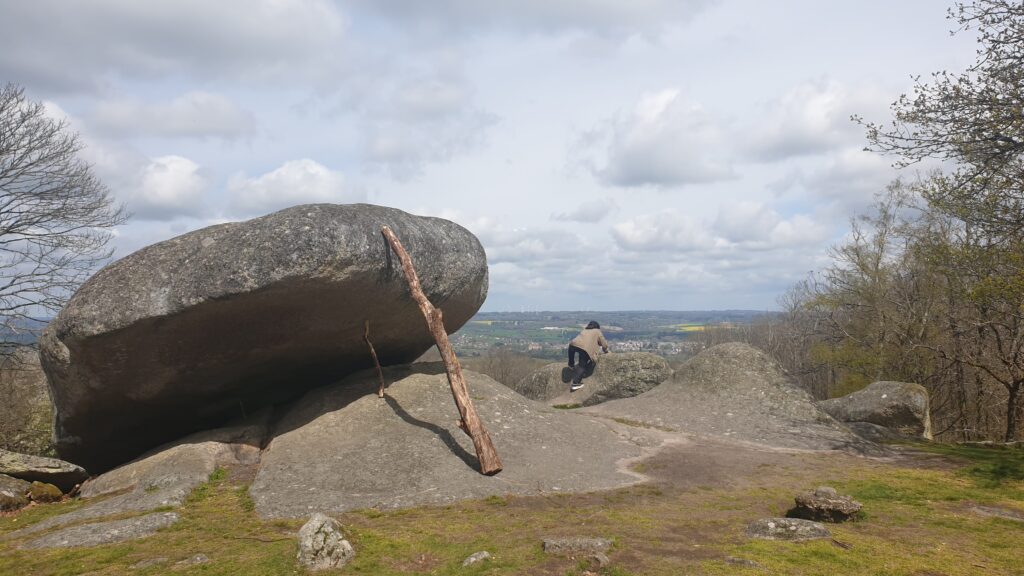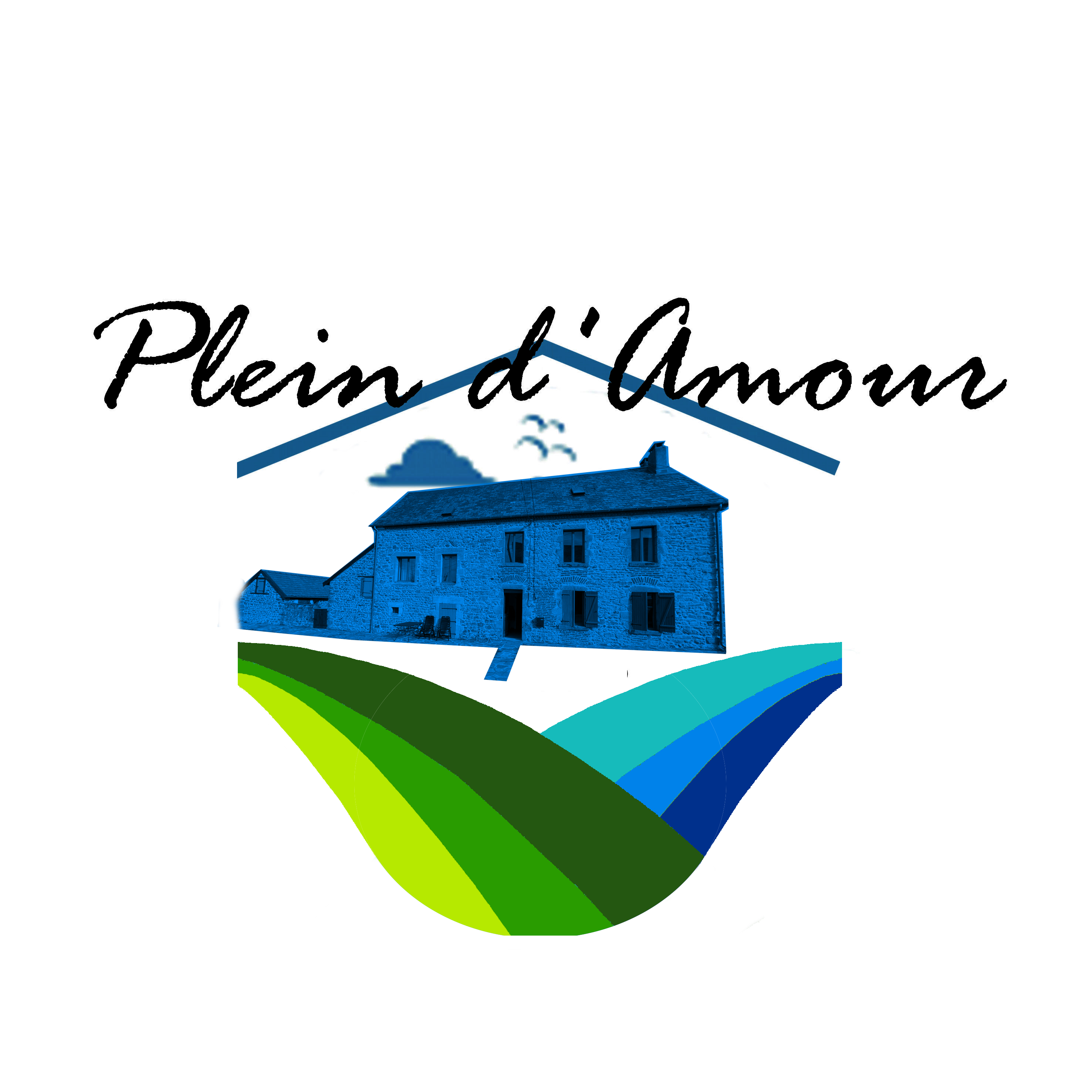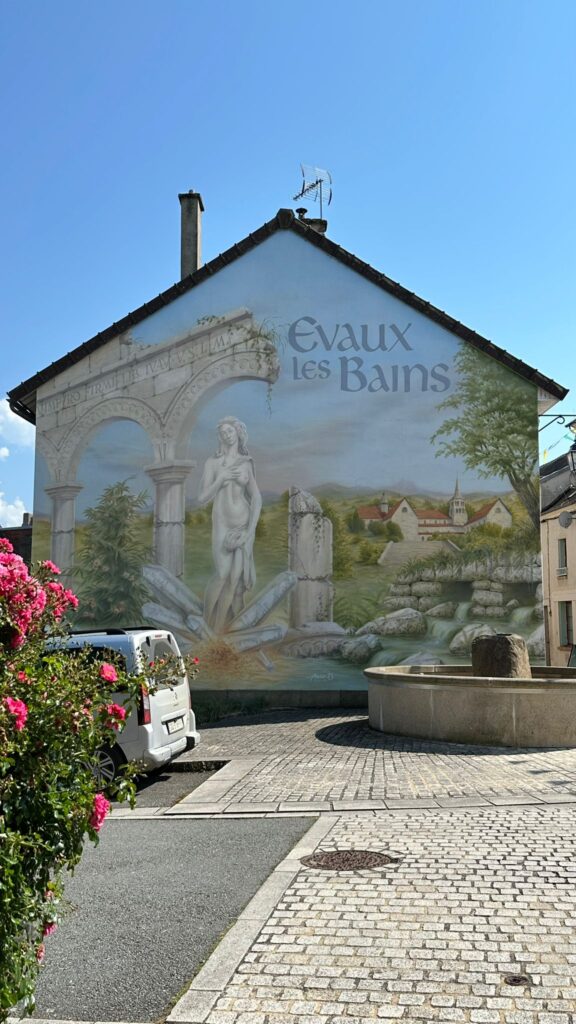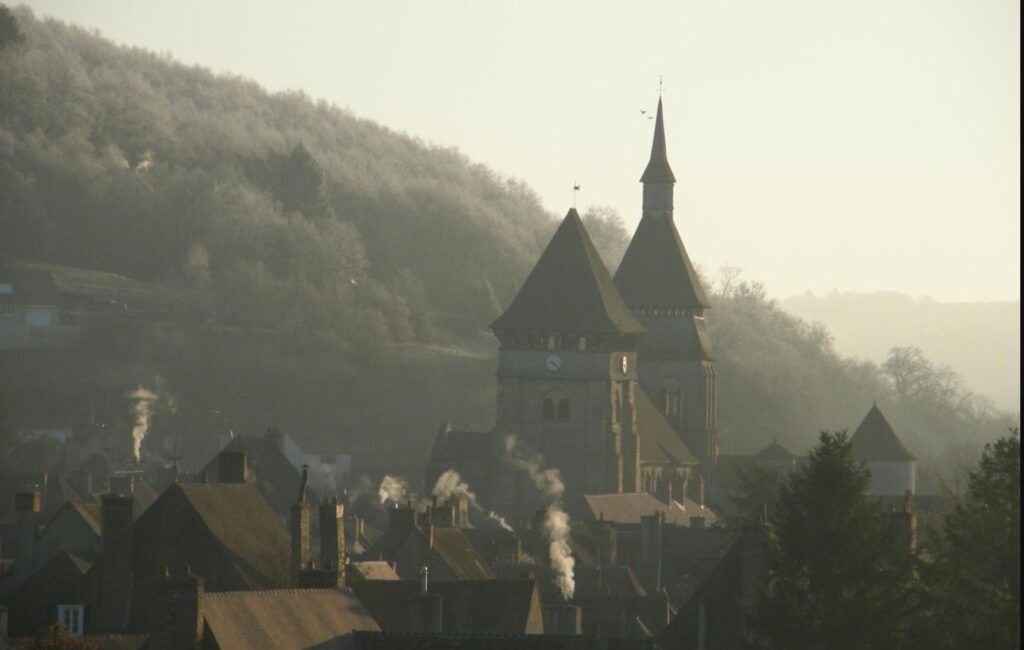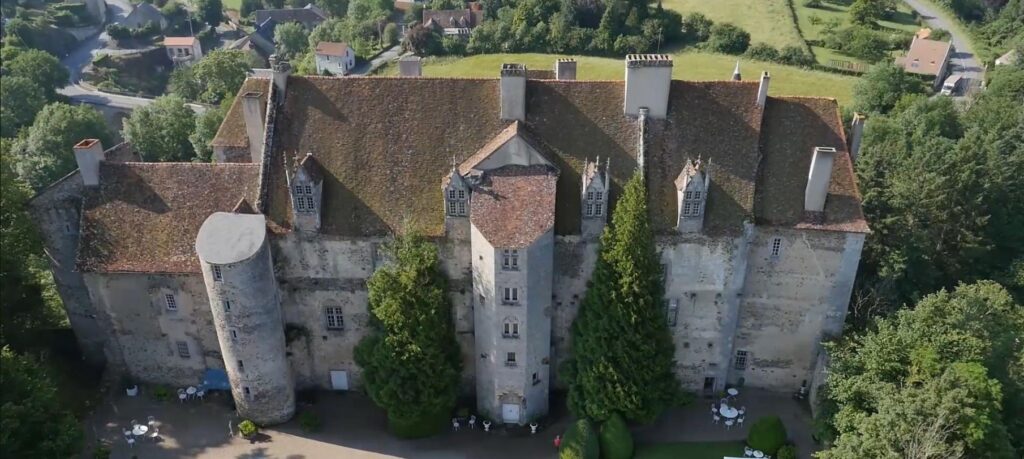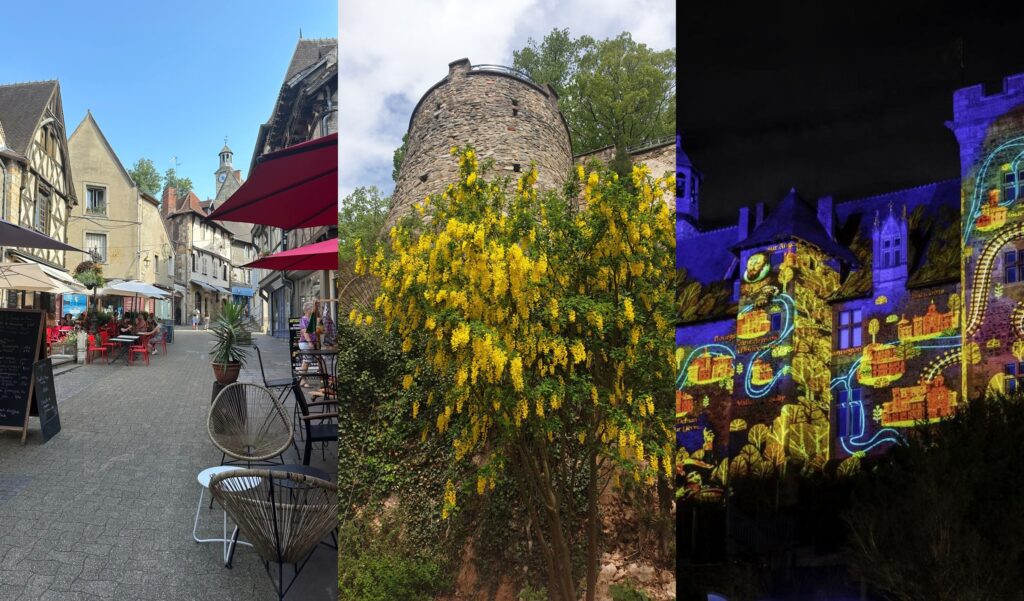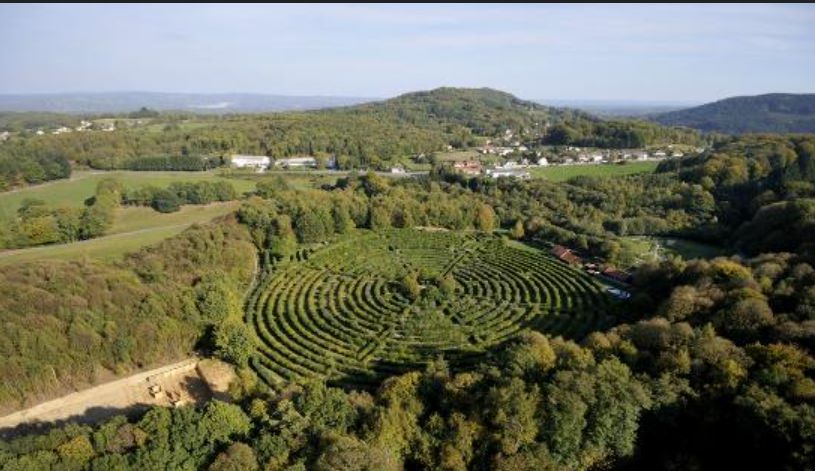Restaurants, cities and attractions
Chambonchard :
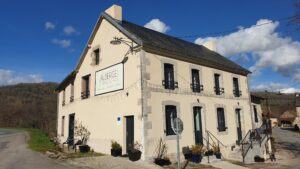
We can recommend Restaurant Auberge Chambonchard if you are looking for French cuisine close by with a cozy Dutch touch. In the brand new restaurant with monument status and dedicated support of the local mayor, you can enjoy delicious two, three, four or five course menus both inside and on the outside terrace and still reasonably affordable.

Also for Indonesian food you can go nearby to Patricia and Dennis at a wonderful, adventurous and remote location, at Serigala Hijoe or Le Loup Vert . Remember to book here in time as is usual in France and it is very exclusive and is therefore fully booked.
Evaux-les-bains :
Chambon-sur-voueize :
Chambon-sur-Voueize is a remarkable village, located in the east of the Pays de Combraille en Marche , in the heart of the Tardes valley. The beautiful houses with brown tiled roofs are grouped around the imposing abbey of Saint Valerie. On every street corner, the past seems to resurface, and we see traces of the activities of the past such as tanneries, hatters, the court, the prison, the hospital, etc. Chambon-sur-Voueize was already known in the Gallo-Roman period and owes its development to a monastery founded in the 9th century. Around 985, most of the relics of Saint Valerie, which had until then been preserved in Limoges , were transferred there. This treasure, captured in a silver reliquary bust, arouses curiosity and humility. The village thus became a place of pilgrimage and the imposing Roman abbey was built.
Boussac :
The town of Boussac , once described as “ the Marche ”, between Berry and Limousin , is dominated by its impressive castle. It is the stronghold of the north-east of the Creuse , whose prosperous and historically rich past can still be seen in the picturesque streets and on the facades of houses with spiral staircases and wrought iron balconies. While the castle, clinging to its rocky spur, remains the showcase of the past, as do the remains of ramparts and towers, Boussac has not ceased to progress and modernise. Shops, entertainment and industry are assets to this rural town. Jean de Brosse, builder of the castle in the 15th century, and companion of Joan of Arc, made Boussac part of the history of France. After him, many famous people stayed in Boussac . More about Boussac and its history here .
Aubusson :
Ruin – Take a nice walk with a wonderful view over the town through the ruins of the old castle and defensive walls, or through the wonderfully authentic tourist center of Aubusson . About 40 minutes drive away is this fairytale town where you can eat delicious food or enjoy the French culture at museums and along the flowing river.
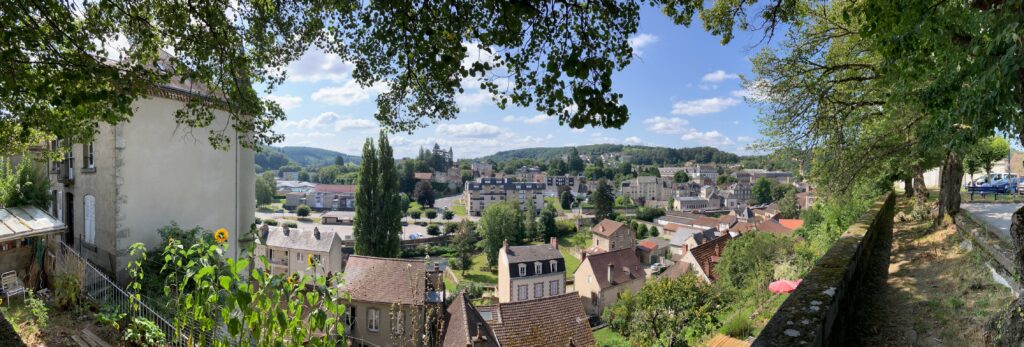
Aubusson : is an architectural heritage that bears witness to the power of the past. Discover the old district of Terrade , the clock tower, the remains of the castle, the church and the old street. Aubusson is also called the “cradle of the tapestry”, there is a tapestry museum and the classic sweet of the town is a raisin bread with nuts and ginger. Land of builders and gateway to the Regional Natural Park of Millevaches , it is a village with character, as evidenced by the beautiful mansions, the medieval bridge on the banks of the Creuse river , fountains and the architectural details that can be discovered along the streets.

Montlucon :
Walk up into the old town centre and admire the panorama offered by the vast courtyard created by Louis II de Bourbon with its symbolic and imposing fortress. From here, you will be aware of the importance of the castle and its protective role for the town of Montluçon . The old stone orientation tablet embedded in a viewpoint over the town and the valley shows you the points not to be missed, including the residence and former home of a young instein who once studied there. The medieval town, built around the castle, was protected by powerful thick walls, flanked by 40 towers, which were accessible through 4 large city gates. The boulevard de Courtais and the boulevard Carnot , which form a complete loop around the historic centre, allow you to imagine today the location of the ramparts surrounded by moats. In the bends of the city you can admire beautiful monumental houses from the 15th and 16th centuries, visit the tranquility of the church Saint-Pierre and Notre-Dame or walk in the shade of the large walls in the Wilson Garden . There is also an interesting museum of modern Pop Music, it offers a unique collection of musical instruments and memorabilia showing the history of French popular music. A little further on there is a wonderfully wide Boulevard along the river Cher .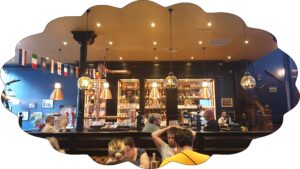
In the old cosy city center you can shop at small boutiques such as Dont Call Me Jennyfer , or have a drink at the Bar La Notte or a delicious meal at the Sports Bar Au Bureau near the old station; where the war memorial from WWII tells a heroic story about the residents of Montlucon who threw themselves in front of the trains to prevent the deportation of victims that were put to work in workcamps. On the new industrial part on the other side of the river Cher there are all kinds of eateries and shopping centers such as LeClerc , Carrefour , Mcdonalds , BurgerKing , Wokplaza , Buffalo Grill etc. etc. so there is no shortage of options and there are numerous spacious shopping opportunities with something for everyone. More info here.
Guerret :
In the heart of the Creuse nature reserve , where green forests, vast meadows, winding rivers such as the Creuse and the Gartempe , as well as picturesque creeks and ponds adorn the landscape, lies the Monts de Guéret Nature Sports Resort . This resort welcomes you all year round to fulfil your desire for freedom, fresh air and physical activities in nature. Here you can immerse yourself in a protected outdoor environment, away from the hustle and bustle of everyday life.
The resort offers a multitude of outdoor sports activities suitable for everyone. Thanks to the rich ecosystems and exceptional biodiversity of the Monts de Guéret, you will be amazed by the beauty of this environment and can relax to the fullest, far from the stress of densely populated urban areas.
With a wide range of routes and activities, you can share unforgettable memories with friends and family. Whether you choose hiking, mountain biking, horse riding, canoeing, tree climbing or even a flight over the Creuse river , there is something for everyone. The Monts de Guéret offer a range of “land”, “water” and “air” activities, as well as the opportunity to discover the natural heritage of the region. This guarantees a complete and refreshing experience for everyone: children, adults, sports enthusiasts and nature lovers. More information on this site.
Toulx-Sainte-Croix
Toulx-Sainte-Croix is a small, picturesque village located in the Creuse department in the Nouvelle-Aquitaine region of France. Although it is a small village, Toulx-Sainte-Croix has a rich history and a strong connection to nature, making it a unique destination for those who want to experience the unspoiled charm of the French countryside. The village is known for its rural charm, historic buildings, and beautiful views of the surrounding landscape. One of the most striking sights in Toulx-Sainte-Croix is the old Romanesque church, the Église Sainte-Croix , which dates back to the 11th century. The church is notable for its unique architecture and its tall, massive tower, which forms a dominant feature in the landscape. The church is dedicated to the Holy Cross, as the name of the village suggests.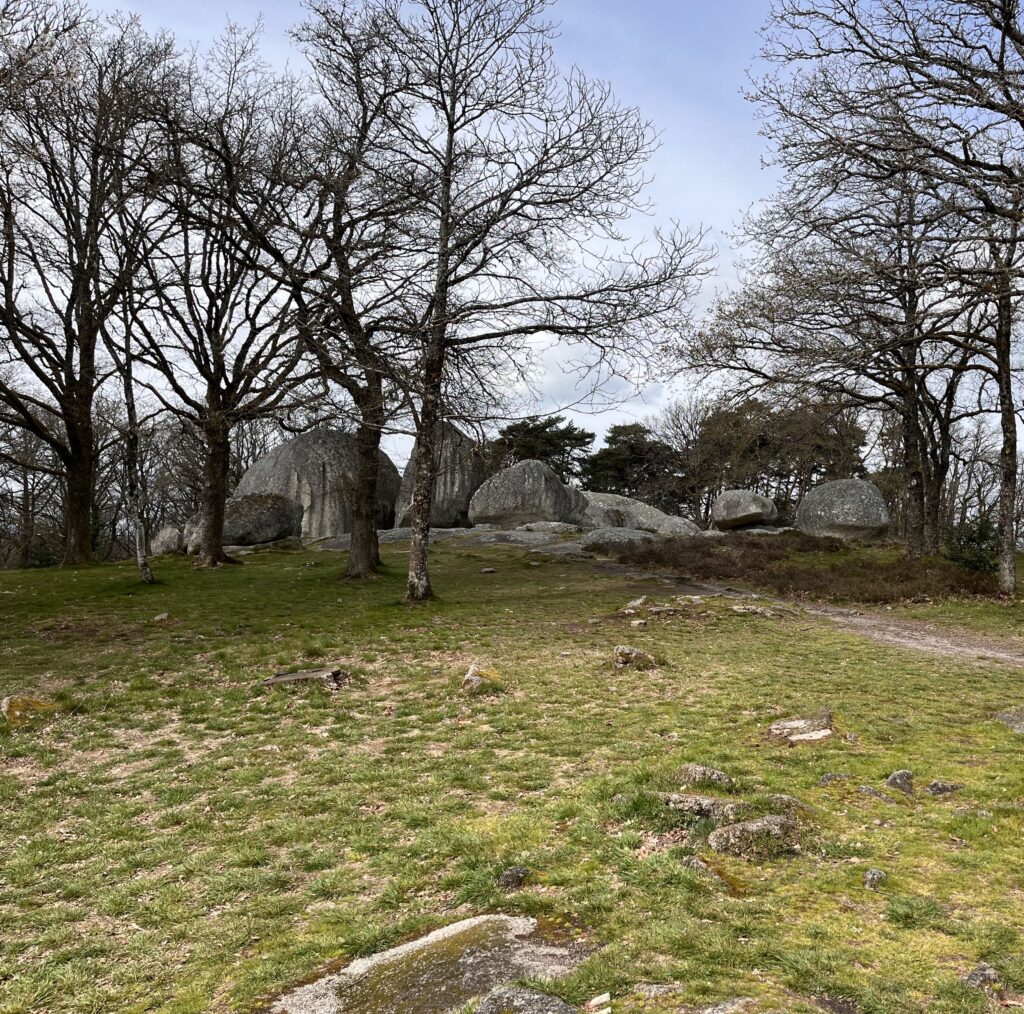
Another interesting aspect of Toulx-Sainte-Croix is its proximity to the “Pierres Jaumâtres” , a mysterious collection of large granite boulders piled on a hilltop. This natural phenomenon has inspired many legends and offers panoramic views over the surrounding valleys. Situated on a hilltop near the village of Toulx-Sainte-Croix in the Creuse department of France, this unusual rock formation stands at an altitude of approximately 591 metres on Mont Barlot and offers spectacular views over the surrounding region. The Pierres Jaumâtres are known for their striking and sometimes bizarre shapes, created by thousands of years of erosion. Some of the stones balance in a way that seems almost impossible, adding to their mystical aura. This has led to many legends and stories surrounding the 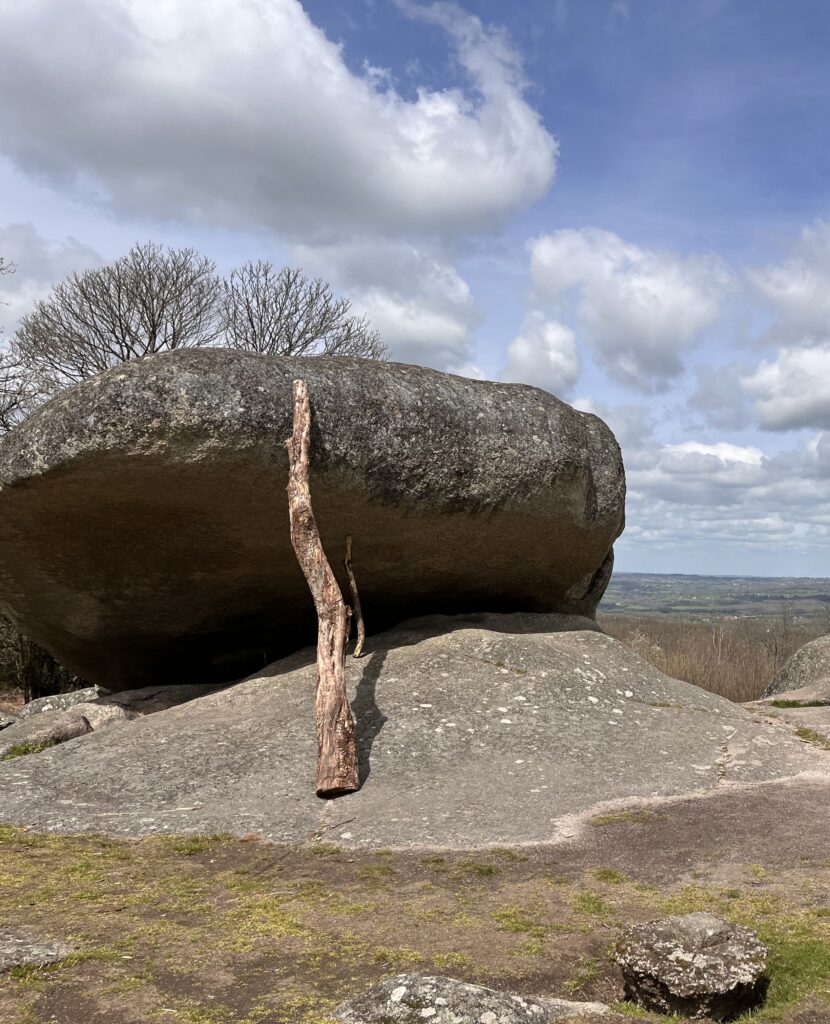 stones, often associating them with druids, witches and other mythological figures. One popular legend says that the stones were left by a giant, while another suggests that they were a place for ancient Celtic rituals. However, the exact origin and purpose of these formations have not been scientifically determined, adding to their mystery.
stones, often associating them with druids, witches and other mythological figures. One popular legend says that the stones were left by a giant, while another suggests that they were a place for ancient Celtic rituals. However, the exact origin and purpose of these formations have not been scientifically determined, adding to their mystery.
Today, Pierres Jaumâtres is a popular destination for walkers, nature lovers and tourists who want to experience the mystical atmosphere and natural beauty of the location. In addition to exploring the rock formations, visitors can also enjoy the panoramic views over the green landscapes of the Creuse and Limousin with its many footpaths that meander through the rolling countryside. The village offers a peaceful, serene environment away from the hustle and bustle of city life, and attracts visitors in search of peace and natural beauty. There is also a leisure park nearby, offering activities such as tree climbing, an adventure course and other outdoor activities, making the location attractive to both adults and children.
